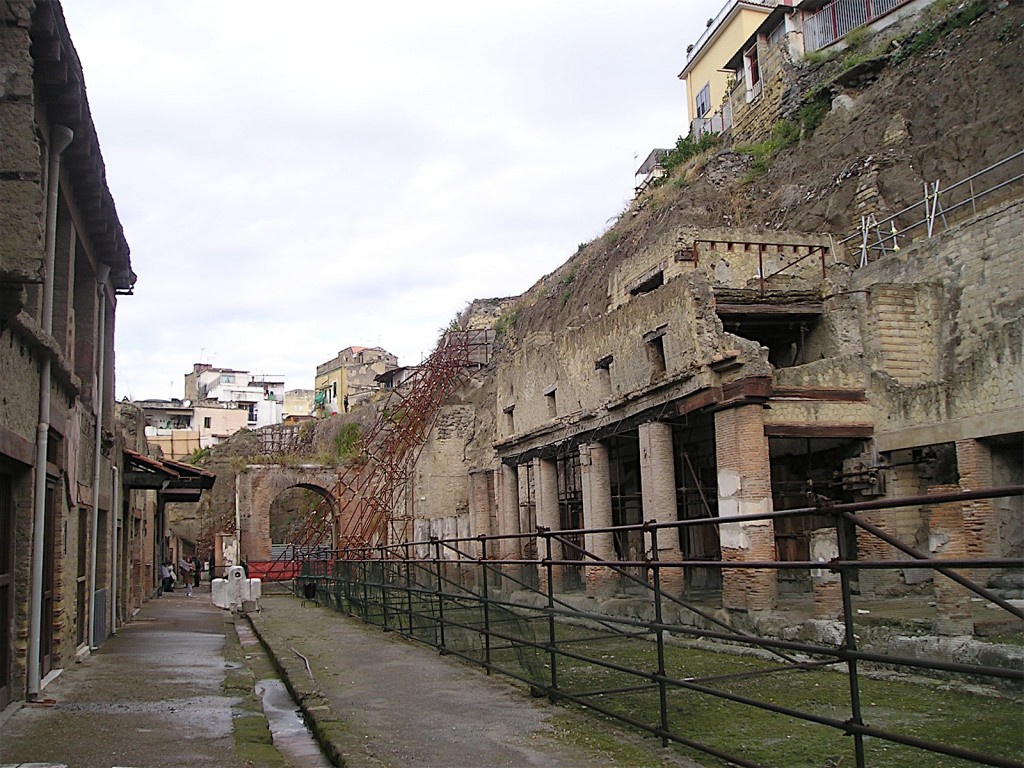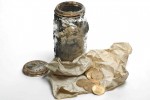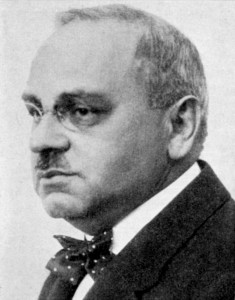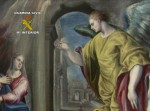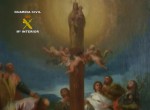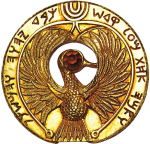The Decumanus Maximus, the main street bisecting the ancient Roman city of Herculaneum, has been closed to the general public for over 20 years while it received much-needed maintenance. Now Herculaneum’s largest thoroughfare has finally been reopened so visitors can enjoy a stroll down its impressively preserved length.
“Most of Herculaneum as experienced by tourists consists of little narrow streets where people could virtually lean across from balcony to balcony and touch hands,” [archaeologist Andrew] Wallace-Hadrill said. “But the Decumanus Maximus is a big public space. It’s impressive.”
Herculaneum is west of Vesuvius, on the other side of the volcano from its more famous cousin, Pompeii. It was a smaller, wealthier town and it appears that most of its residents were able to evacuate before the pyroclastic surges from the August 24th eruption of Mount Vesuvius in 79 A.D. buried the city in what would eventually cool down into 50 to 60 feet of volcanic tuff rock. The thick coating would seal the town airtight and allow for the incredibly rare survival of organic materials like wood and food.
That massive cap of rock would also make treasure-hunting and destructive early excavation more of a challenge, so even after it was rediscovered by workers digging a well in 1709, most of it remained unexposed to the elements. The part that was excavated, however, was in atrocious condition as recently as 2001. Most of it was closed to tourism due to safety reasons. Much like the problems Pompeii is facing today, Herculaneum was in need of constant restoration and maintenance, much of it not the glamorous kind of work that gets the kind of funding it needs.
In 2001 the Herculaneum Conservation Project (HCP) stepped up to the plate. Funded by David W. Packard, president of the Packard Humanities Institute, the HCP works with the State Superintendence for Archaeological Heritage of Naples and Pompeii with help from the British School at Rome to do all the grunt work necessary to keep the ancient site in stable condition.
The project has consolidated the escarpment that towers over the town, stabilised all but a handful of the ancient buildings, repaired most of the existing roofing and reinstated the original Roman drainage system, providing an outlet for water that once accumulated on the site and threatened to destroy it.
The contrast with developments at Pompeii, where part of a 2,000 year-old house fell down last year, could scarcely be starker.
According to project director Wallace-Hadrill, the focus on regular, unglamorous maintenance, cooperation with the state ministry and implementing “low-cost, sustainable, practical solutions” has not only been extremely effective at stabilizing the site, but has also revealed splashy finds like a richly decorated ceiling, all the Roman craftsmanship still intact.
